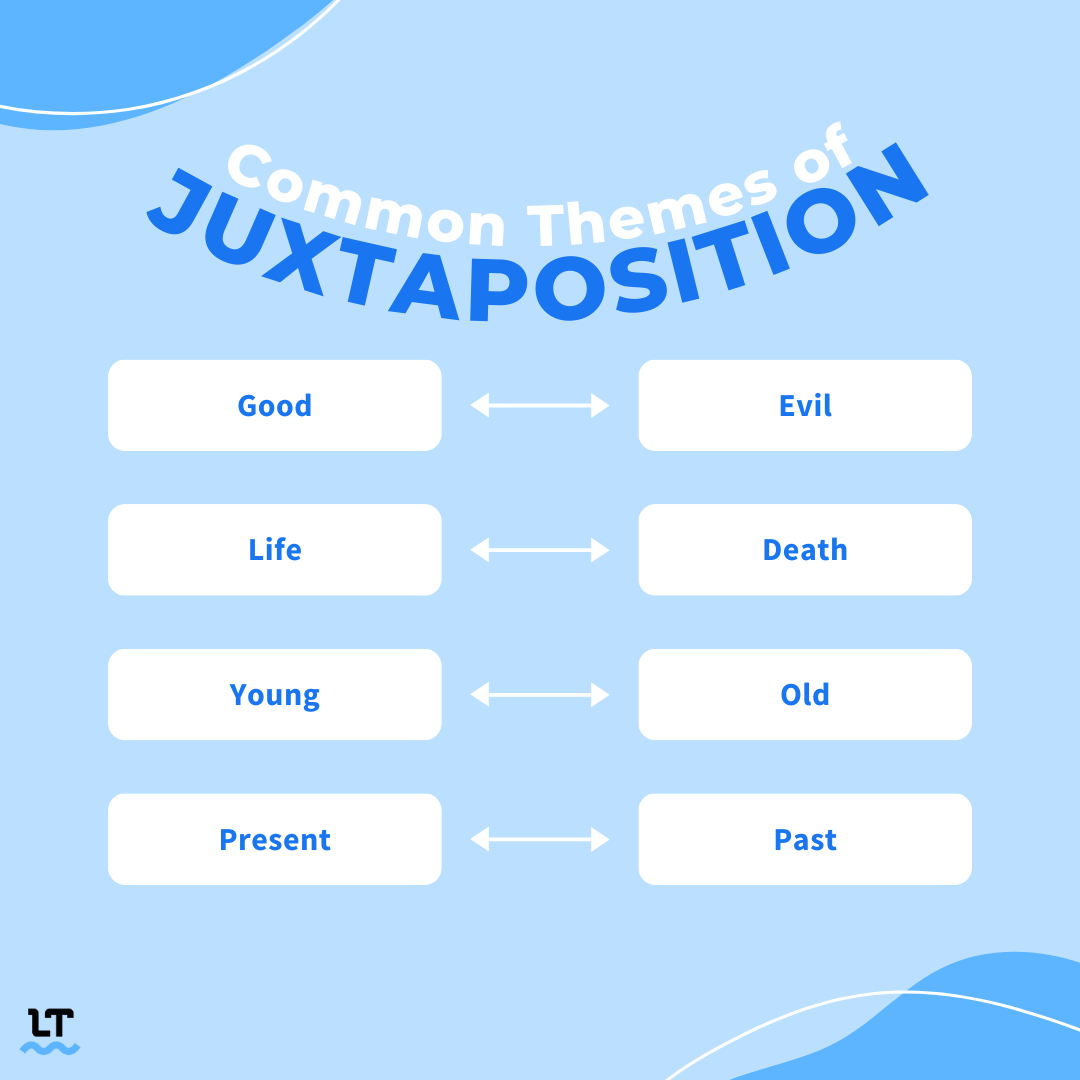Juxtaposition: Learn What It Means and How To Use it in Your Writing
Juxtaposition is a literary and rhetorical device in which two contrasting elements, ideas, images, or characters are presented in close proximity to create a striking effect.
Picture a family with a relentlessly crying baby on an otherwise peaceful and quiet beach. Now imagine an extraordinarily black bear rolling around in blinding white snow. What do those two scenes have in common?
Both contain juxtaposition.
You may be wondering why writers would want to use juxtapositions in their writing. One would be to highlight differences and therefore evoke emotions, emphasize something, or grasp the audience’s attention. However, juxtaposition may also serve to connect seemingly unrelated themes. It can also help highlight the intricacies of a characteristic or concept that a reader might otherwise overlook.
In short, juxtaposition is a way to encourage readers to compare, contrast, and evaluate particular elements that are relevant to the text.

Examples of Juxtaposition
There are numerous juxtaposition themes that writers frequently use in their writing. We’ll explore a few of them below and provide examples of how they may be presented.
1. Good and Evil
Juxtaposing good and evil allows readers to explore the complexities of morality, righteousness, and wickedness.
2. Love and Hate
These intense feelings can be contrasted to show the intensity and transformative nature of relationships.
3. Life and Death
Writing about life and death can make readers notice the fleeting nature of life and the profound impact of mortality.
4. Young and Old
Juxtaposing youth and old age can help showcase the themes of energy and innocence on the one hand and wisdom and experience on the other.
5. Nature and Human Civilization
Writing about nature and human civilization helps contrast the seamless beauty and harmony of the natural world with the sometimes chaotic constructs of human society.
6. Innocence and Corruption
The juxtaposition of innocence and corruption can help demonstrate the contrasts between the purity and naivety that stem from innocence and the influence of corruption in the form of greed or power.
7. Wealth and Poverty
Writing about wealth and poverty can highlight the disparities between affluence and destitution.
8. War and Peace
Contrasting war and peace allows for the exploration of the grave difference between conflict and tranquility, and destruction and serenity.
9. Past and Present
Juxtaposing past and present can help readers see the influence of history and tradition and compare it to the demands, modernity, and progress of the present.
10. Freedom and Confinement
Writing about freedom and confinement can juxtapose the yearning for liberation, individualism, and self-expression with the constraints of societal norms, expectations, and even systems like prisons that literally keep one confined.
Juxtaposition in Literature
Examples of juxtaposition abound in literature. If you’re looking for some, here are a few quotes, lines, or passages from famous authors.
—Charles Dickens (A Tale of Two Cities)
—George Orwell (1984)
—M.C. Escher
—William Shakespeare (Romeo and Juliet)
—Albert Camus
Juxtaposition is One Tool That Can Elevate Your Writing, but There’s Another
Just like idioms and rhetorical questions, juxtaposition is an incredibly effective device that can help enhance your writing and create desired effects. That’s why it’s been used so often in the past and will continue to be used in the present and future.
There’s another way to easily elevate your writing from just okay to exceptional, and that’s by using LanguageTool. This advanced multilingual writing assistant not only corrects various types of errors, but it can also provide stylistic suggestions to improve the flow, tone, and clarity of your text.
Try it to start transforming your writing today!
